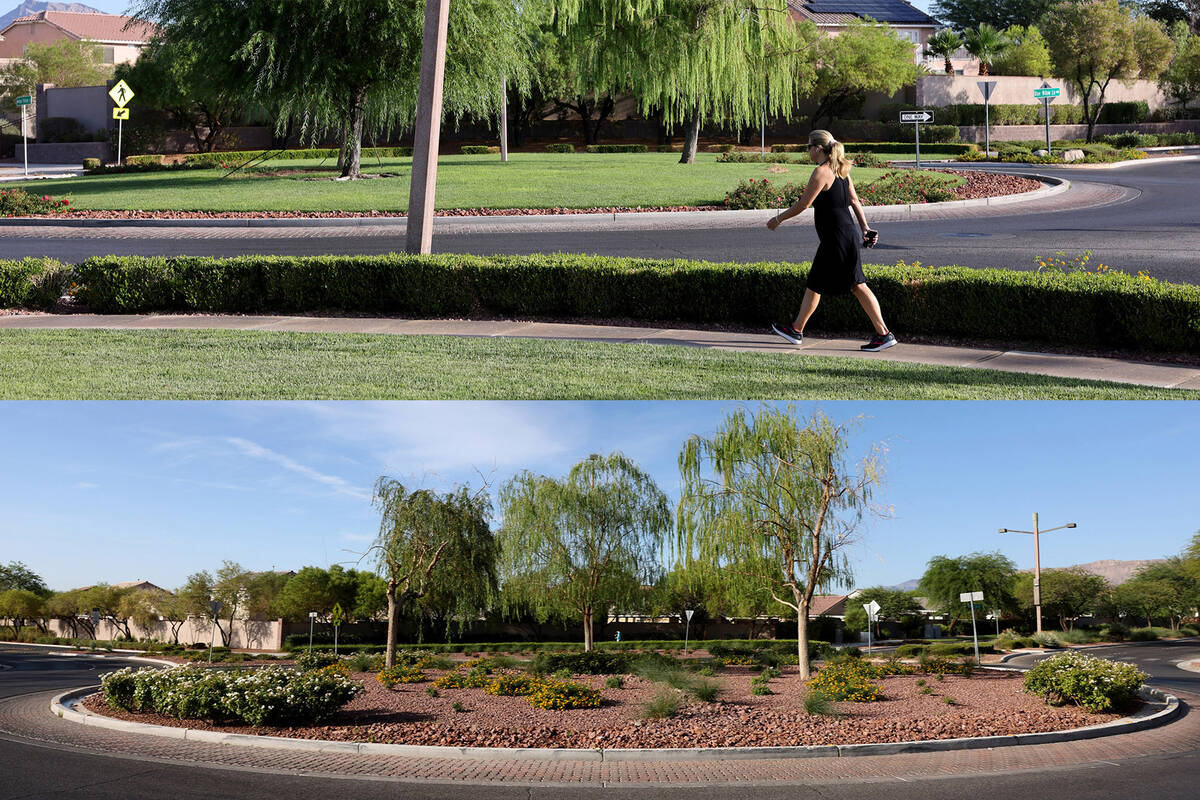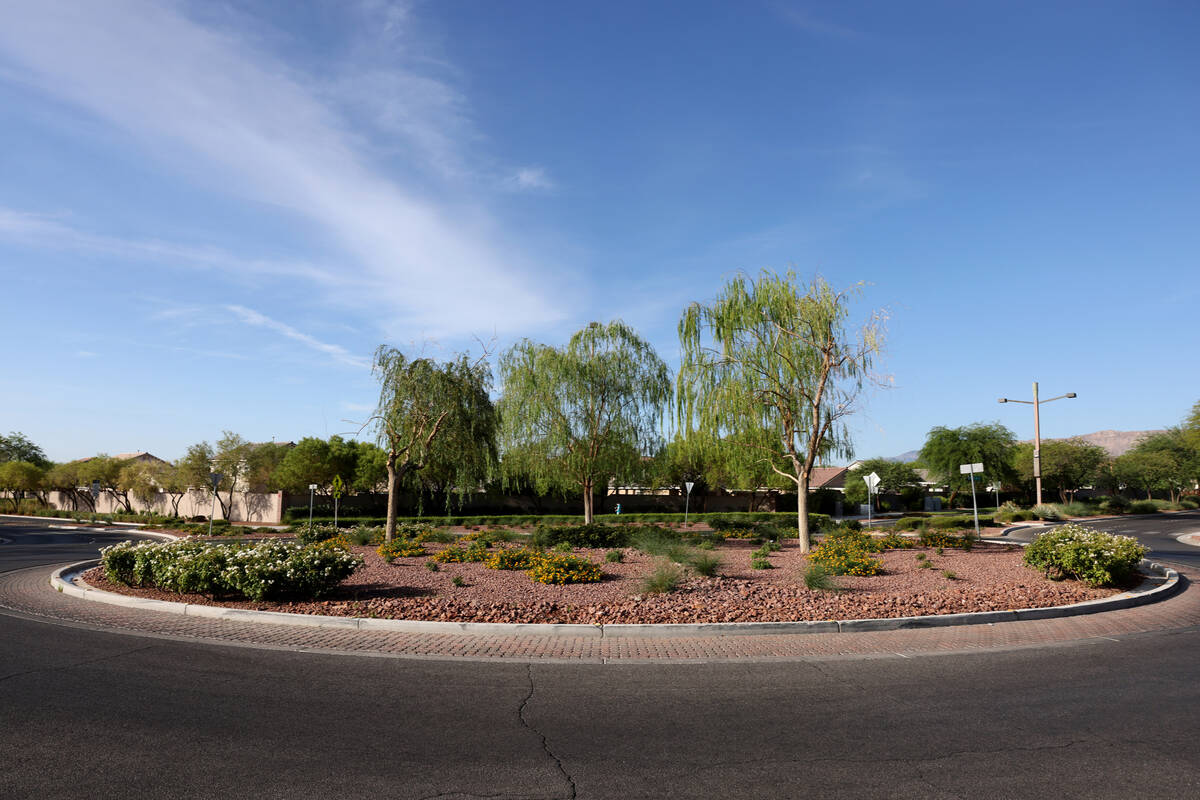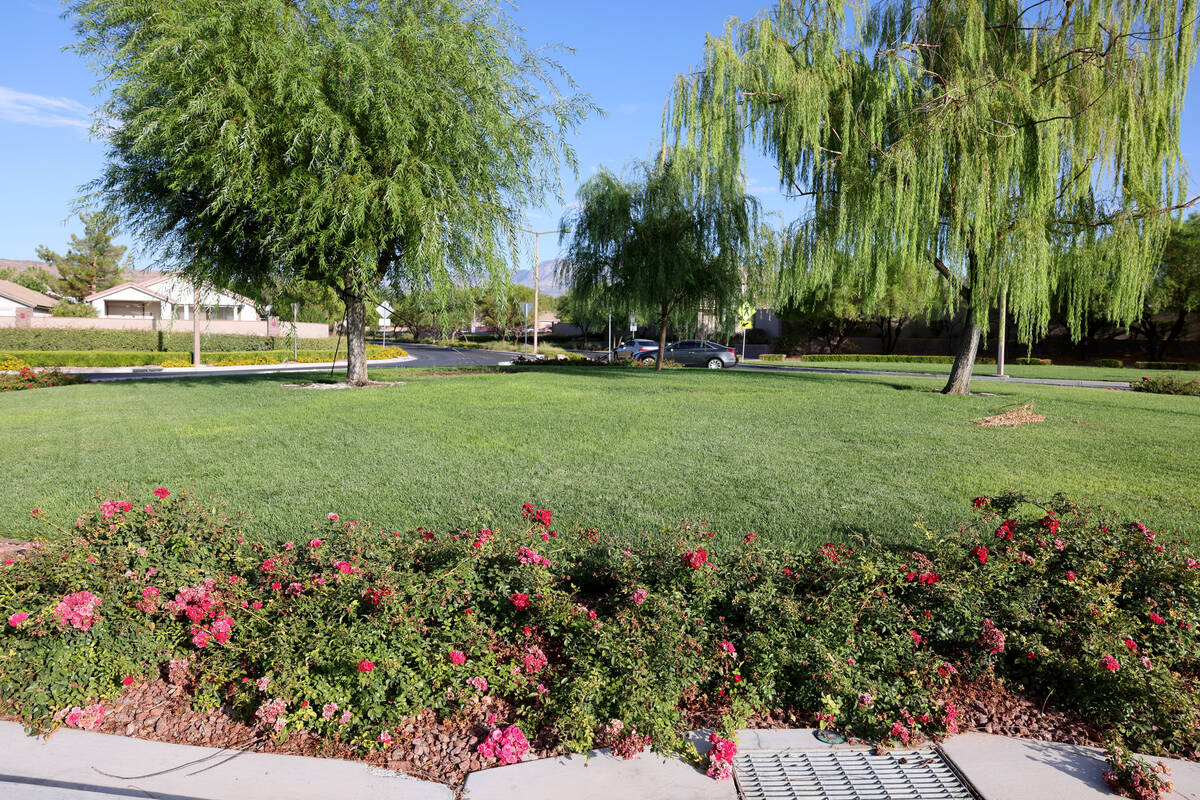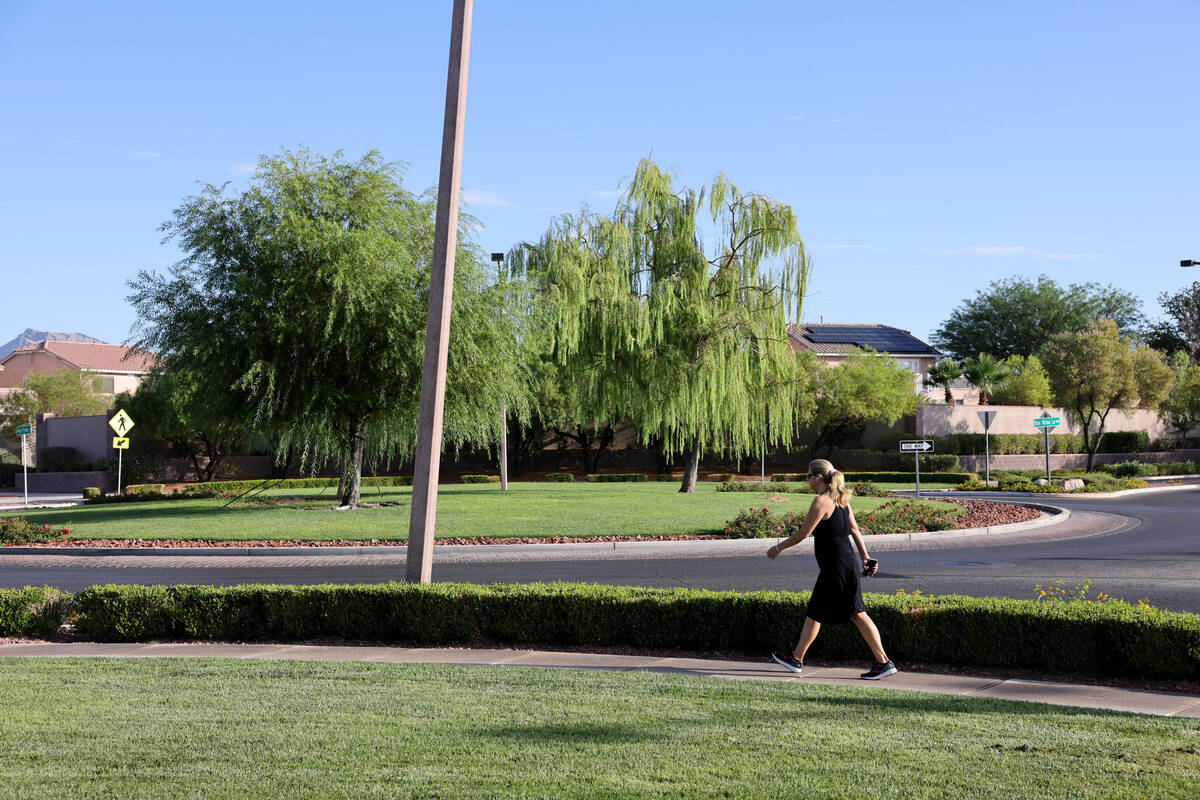Southern Nevadans hear, follow message about water conservation
Southern Nevadans are heeding the most recent call for residents of Colorado River basin communities to take stronger water conservation measures.
Las Vegas Valley residents have been practicing such conservation measures for decades, and more are now taking steps to do the same. No fewer than 62 residential homeowners applied Tuesday to enroll in the Water Smart Landscape program, which removes grass in favor of desert-friendly plants and trees.
“With the recent news of an added shortage reduction we’ve seen an immediate uptick in residential applications for the program,” said Bronson Mack, spokesman for the Las Vegas Valley Water District and Southern Nevada Water Authority. “That’s a very positive response and shows that the residents of Southern Nevada understand the need to conserve, especially in their outdoor water use.”
John Entsminger, general manager of the water authority and Nevada’s top Colorado River negotiator, used sharp words in letters to Interior Department officials last week as he decried the fact that two months of negotiations among water users have failed to come anywhere close to reaching a plan to cut 2 million to 4 million acre-feet of water use for the coming year.
Before the states’ water officials began negotiating, the Bureau of Reclamation warned that failure to reach agreement would result in the federal government mandating water use reductions. The deadline passed without the federal government making any specified cuts, saying only that it wants the states to cooperate.
Blazed the trail
Southern Nevada has been at the forefront of water conservation for decades, and the water authority’s message is for other communities to follow.
“Our community has blazed the trail for urban conservation both nationally and internationally by reducing our consumptive use from the river by 26 percent while adding more than 750,000 people to our valley,” Entsminger said while spelling out 12 recommendations for the federal government to consider implementing — including that all communities in the basin adopt turf removal programs or increase funding for programs similar to Water Smart.
Phoenix does not have any turf removal program while Los Angeles has offered some turf rebates, Mack said, adding that Aurora, Colorado, recently passed ordinances that prohibit nonfunctional grass in new developments.
In Southern Nevada, 4.5 million square feet of grass have been converted to desert landscape this year, an annual savings of 254 million gallons of water, Mack said.
Nearly 3,400 residential customers have completed conversion projects this year.
73 gallons vs. 18 gallons
Because Nevada receives the smallest allocation of Colorado River water, officials have been preaching conservation for more than two decades.
“The replacement of grass with drip-irrigated trees and shrubs is one of the most effective ways to permanently reduce water use across our community,” Mack said. “When you take out grass, that is a permanent water saving.”
One telling statistic: A square foot of grass in the Mojave Desert takes 73 gallons of water a year to survive. With Water Smart or drip-irrigation, a square foot needs 18 gallons a year.
“Now think about an entire front or back yard,” Mack said. “A single square foot of grass takes a column of water 10 feet high per year to survive.”
Summerlin’s effort
Mack said Summerlin has been busy all summer converting water-hungry grass to plants and shrubs.
“They have really, really put forth a strong effort and a commitment to removing nonfunctional grass,” he said. “Just about everyday; some of it is roundabouts and some from streetscapes.”
Summerlin’s grass removal program will run at least 12 to 18 months and probably beyond. Officials have worked with the water authorities to identify areas where turf reduction is appropriate, while still ensuring the usefulness of recreational open spaces.
“To date, the removal of nonessential turf and/or the replacement of Fescue grass with Bermuda grass in Summerlin is saving more than 13 million gallons of water annually,” Summerlin spokeswoman Melissa Warren said in an email.
“This is a valley-wide issue of the highest priority, so everyone is eager to do their part to reduce water consumption for the benefit of Southern Nevada,” she wrote.
Contact Marvin Clemons at mclemons@reviewjournal.com. Follow @Marv_in_Vegas on Twitter.


























